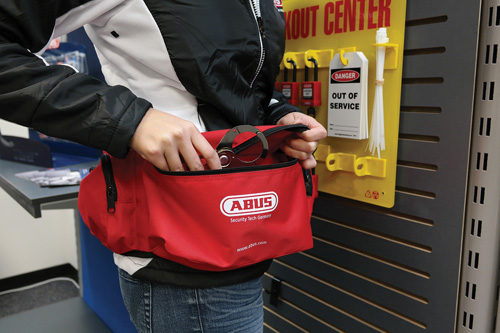Lockout/tagout: Getting it right
What’s the best way to centralize/consolidate LOTO procedures?

Responding is Jenna Martell, marketing advisor, ABUS USA, Phoenix.
Lockout/tagout is not a topic to take lightly when it comes to the safety of industrial facilities. Improperly following procedures or having no procedure at all is a serious OSHA offense, and fines are applied accordingly.
Many organizations would benefit greatly from having their lockout/tagout procedures analyzed and consolidated. A simple procedure, with all necessary supplies and equipment in one easy-to-find location, makes following through much less of a burden on employees. These services are readily available and should be used to ensure facilities are OSHA-compliant.
Lockout kits or stations are some of the most convenient products that help centralize lockout/tagout equipment.
A kit, for example, would consist of a small toolbox or pouch that contains all the items necessary for locking out a particular machine or piece of equipment, including padlocks, machine-specific devices, tags and any other required accessories. Kits are usually portable but should be kept right near the machine(s) they are prepared for.
Lockout stations are another useful option. They are usually a high-visibility color, such as yellow, and are made to be mounted on a wall near the machine or piece of equipment their contents lock out. These are a great visual reminder for employees to follow proper lockout procedures.
Locking or tagging out a machine correctly before maintenance truly can be a life-or-death situation. Simplifying procedures and ensuring they are properly followed will avoid potential OSHA violations and also save lives.
Editor's note: This article represents the independent views of the author and should not be construed as a National Safety Council endorsement.
Post a comment to this article
Safety+Health welcomes comments that promote respectful dialogue. Please stay on topic. Comments that contain personal attacks, profanity or abusive language – or those aggressively promoting products or services – will be removed. We reserve the right to determine which comments violate our comment policy. (Anonymous comments are welcome; merely skip the “name” field in the comment box. An email address is required but will not be included with your comment.)

